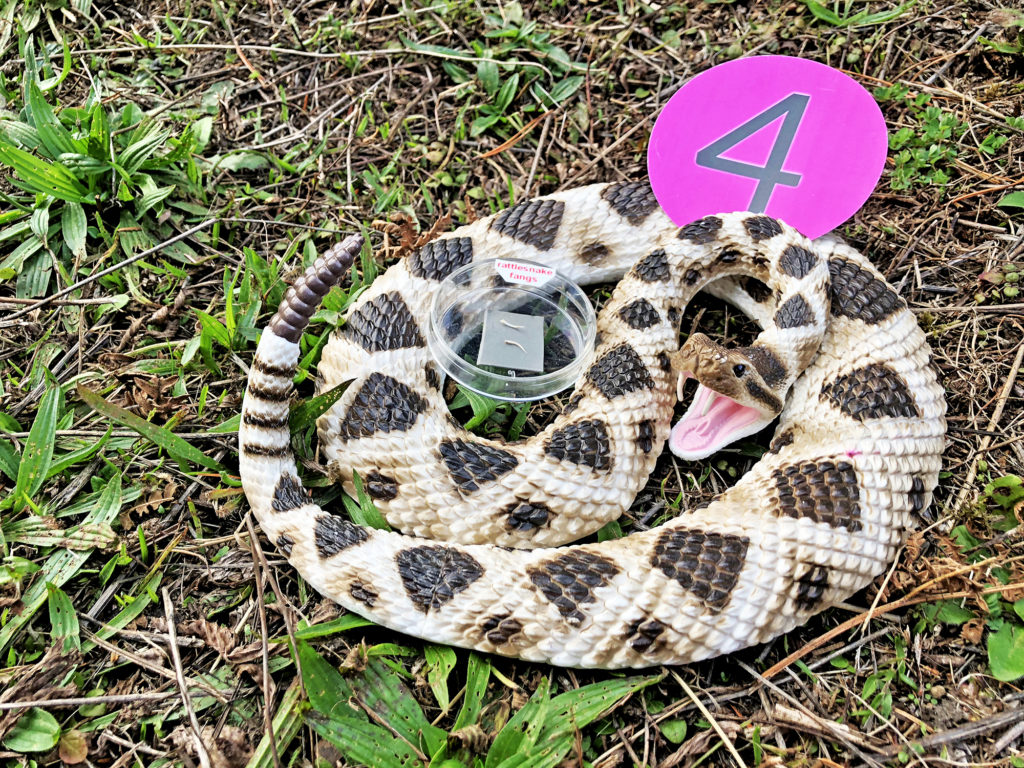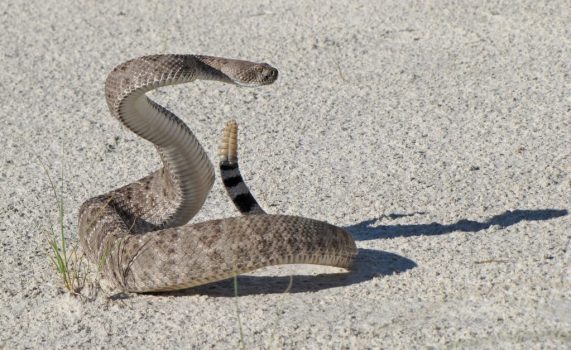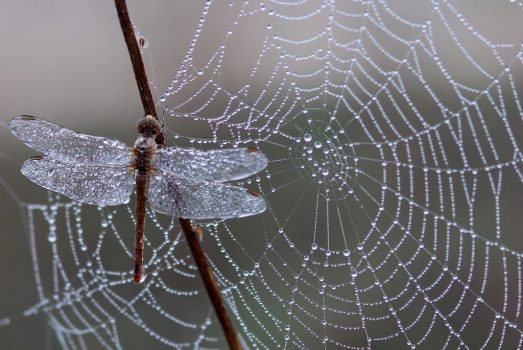
Weapons
Weapons
Once a predator catches up with its prey, it has to hold on and immobilize the animal.
Learning Objective: Identify the physical structures animals use to capture and immobilize prey.


Predators use a variety of weapons to immobilize prey. Rattlesnakes, known for their rattling tail that may warn away their potential predators, have fangs that deliver a hemotoxic venom that disrupts blood clotting and destroys tissues.
Even though there are dozens of rattlesnake species in the Americas, the majority are declining due to habitat loss and direct extermination.
Spiders also use fangs and venom to immobilize prey. This dragonfly could destroy the spider’s web, and it takes a great deal of energy and time to build a new one.

Many carnivorous vertebrates use talons (birds) and claws (reptiles and mammals) to hold on to prey.
Watch this video; you can select the closed captioning “cc” option if you would like to see the text.
Felids, the cats, have curved claws that easily penetrate prey skin.
Uschi is “kneading,” gentle claw extension and retraction. Kittens may use this to stimulate milk release from their mothers.
Some adult cats retain this behavior and primarily exhibit it when they are in safe conditions, similar to when they were kittens being fed by their mothers.
Cats, dogs, and bears are called “carnivorans” because they are classified in Order Carnivora.
The next section focuses in on one group of carnivorans: the cats.











